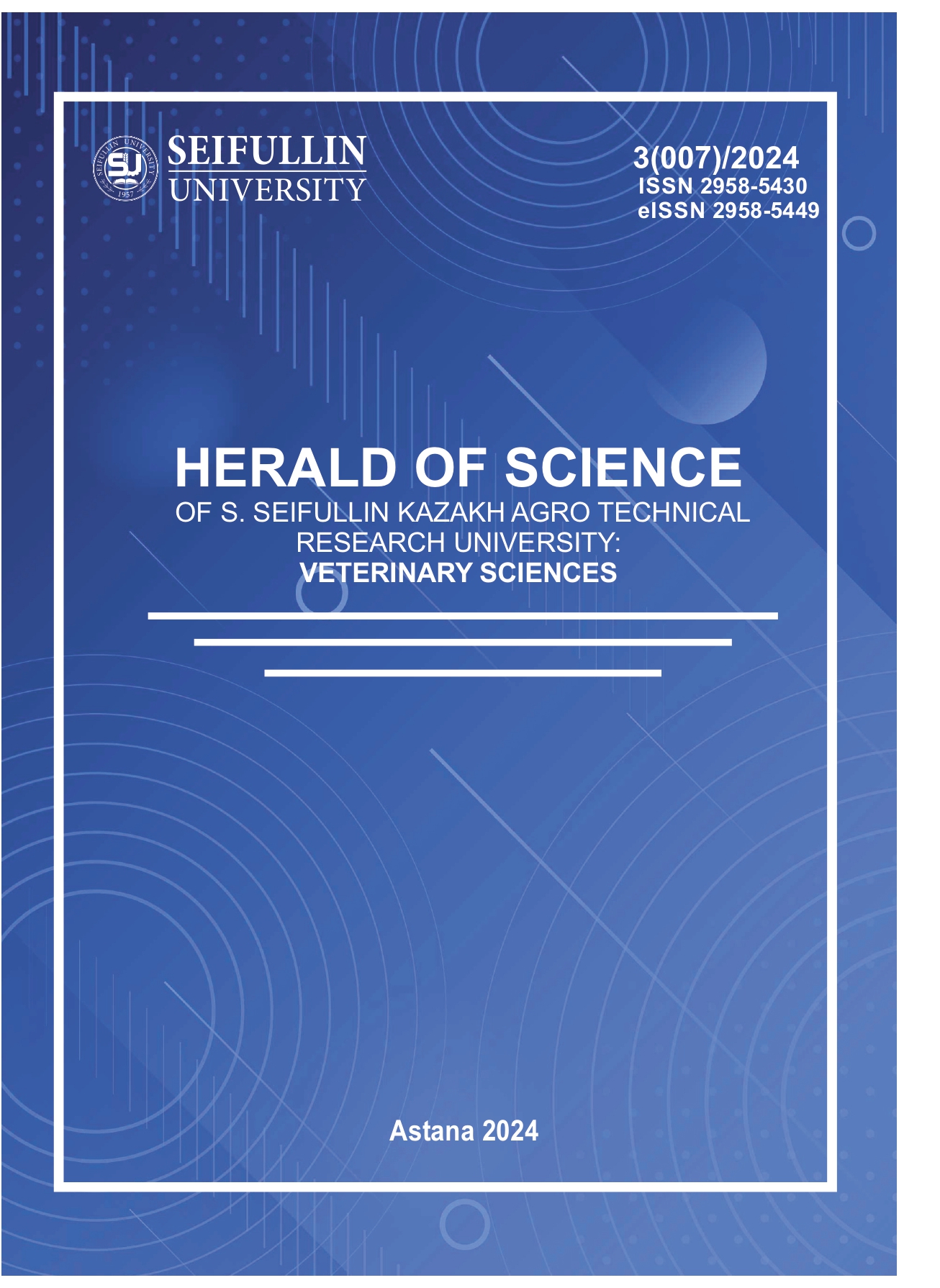Study of allergic reaction to somatic antigen made from a live plague vaccine of the EV strain
DOI:
https://doi.org/10.51452/kazatuvc.2024.3(007).1735Ключевые слова:
Delayed-Type Hypersensitivity; Plague Dry Live Vaccine from EV Strain; Somatic Plague Antigen.Аннотация
Background and Aim. This article presents the results of experiments conducted to study delayedtype hypersensitivity to somatic plague antigen derived from a live plague vaccine from strain EB. This study aims to investigate delayed-type hypersensitivity to a somatic plague antigen derived from a live plague vaccine of the EV strain.
Materials and Methods. Methods included the following: extraction of the main somatic antigen from the vaccine strain Yersinia pestis EV, determination of the Lowry protein concentration by superimposing the results obtained from a spectrophotometer's digital optical density values of the test preparation on a calibration line; testing of the allergen for sterility (on nutrient media), toxicity (on healthy white mice and guinea pigs), pyrogenicity (on rabbits), absence of sensitizing properties and specificity (on healthy guinea pigs); and determination of the allergenic activity of the main somatic antigen by detecting its hyperergic reactivity in in vivo experiments on guinea pigs.
Results. Further experiments conducted to study delayed-type hypersensitivity to somatic plague
antigen showed that the obtained preparation is sterile, harmless, apyrogenic, has no sensitizing properties, and is specific. Additionally, evaluating the allergenic activity of different doses of the investigated preparation revealed that a dose of 50 mcg is optimal for intradermal administration.
Conclusion. The conducted studies will be used for quality control of somatic plague antigen-allergen, which will allow detection of the absence of sensitizing properties or immunological harmlessness of the allergen at the site of injection in healthy people and animals, thereby avoiding positive responses in both infected and immunized individuals, as well as minimizing the occurrence of false reactions.

